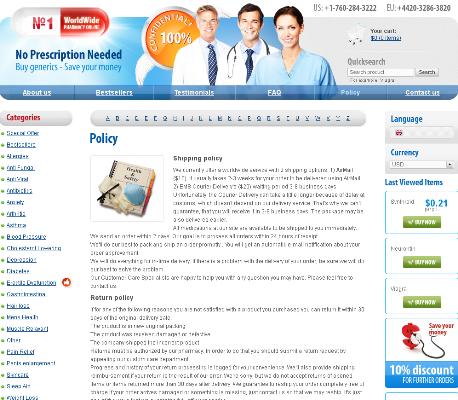The Science Behind Nolvadex: Blocking Estrogen’s Effects
Nolvadex, also known as tamoxifen, plays its role at the molecular crossroads of breast cancer therapy. Estrogen receptors act as “docking stations” on breast cancer cells, fueling tumor growth when estrogen binds to them. Nolvadex steps in as a selective estrogen receptor modulator, or SERM, and blocks these receptors—essentially closing the docks to estrogen’s incoming signals.
This blockade doesn’t eliminate estrogen from the body; instead, it prevents the hormone’s growth-promoting effects in breast tissue. The result is a slowdown, or even a halt, in cancer cell proliferation. Nolvadex’s ability to discriminate between tissues is key to its effectiveness.
| Action | Effect |
|---|---|
| Blocks estrogen receptors | Reduces tumor growth signals |
| Selective action | Minimizes side effects in other tissues |
Because Nolvadex specifically targets the estrogen pathway, it has revolutionized what’s possible in hormone-driven breast cancer treatment.
How Nolvadex Became a Breast Cancer Gamechanger

In the history of breast cancer treatment, few drugs have had such a transformative impact as Nolvadex. First developed in the 1960s, Nolvadex—also known as tamoxifen—was originally investigated as a potential contraceptive. However, its true potential emerged when researchers discovered it could block estrogen receptors in breast tissue, a key factor in the growth of many breast cancers.
Previously, options for hormone-sensitive breast cancers were often limited to radical interventions like surgery or broad-spectrum chemotherapy. Nolvadex offered a revolutionary alternative: a targeted approach that could slow or halt tumor progression with fewer side effects. This shift made breast cancer care both more effective and less taxing for patients.
Over time, Nolvadex became central to treatment, especially for early-stage and hormone receptor-positive cancers. Its introduction marked a turning point, increasing survival rates and empowering patients with new hope.
Furthermore, ongoing research has solidified its legacy, leading to expanding applications in cancer prevention and long-term therapy. Nolvadex continues to be a foundational element in the fight against breast cancer worldwide.
Comparing Nolvadex to Other Hormonal Therapies
For decades, Nolvadex has played a pivotal role in breast cancer therapy thanks to its unique way of blocking estrogen receptors. While aromatase inhibitors reduce the body’s overall estrogen production, Nolvadex specifically targets how breast cells respond to this hormone. This distinction makes it particularly effective for premenopausal women, where estrogen reduction might not be optimal or feasible.
Unlike some hormonal treatments that may cause significant bone loss or joint pain, Nolvadex is often associated with a different side effect profile, such as a slightly increased risk of blood clots but a protective effect on bone density. Its oral administration also makes adherence easier for many patients compared to injectable alternatives.
Many oncologists consider Nolvadex a frontline option, especially for certain subgroups of breast cancer. Its decades-long track record and extensive clinical data continue to support its use in carefully selected individuals.
Managing Side Effects: Myths and Realities

When people first hear about Nolvadex, misconceptions often take center stage. Some fear every patient faces severe symptoms, but the truth is, many women tolerate Nolvadex quite well. Of course, no medication is completely side-effect free, and Nolvadex can cause hot flashes, mild nausea, or changes in menstrual cycles. However, life-threatening reactions are rare and often overstated.
One persistent myth is that all side effects appear immediately or persist throughout therapy. In reality, most are temporary and diminish as the body adapts to the medication. Physicians actively monitor patients, providing strategies—like adjusting dosages or using supportive medications—to minimize discomfort and help women continue reaping the benefits of Nolvadex.
Who Benefits Most from Nolvadex Treatment?
For many, a diagnosis of hormone receptor-positive breast cancer marks the start of a carefully tailored treatment plan. Nolvadex, or tamoxifen, often takes center stage for patients whose tumors are fueled by estrogen. Because it works by blocking estrogen’s access to cancer cells, Nolvadex offers significant benefits for both premenopausal and postmenopausal women. Its effectiveness at reducing cancer recurrence and improving survival rates make it a cornerstone therapy for those with early-stage or locally advanced disease.
Interestingly, certain patient profiles appear to benefit most notably. Young women who have not reached menopause often receive Nolvadex as a first-line adjuvant treatment, especially when fertility preservation and balancing long-term side effects are key concerns. Men diagnosed with breast cancer—a rare but important scenario—may also see positive outcomes due to Nolvadex’s targeted mechanism. Ultimately, the decision relies on tumor biology, individual risk factors, and clinical judgment tailored to each case.
| Ideal Candidates for Nolvadex | Reasons for Benefit |
|---|---|
| Premenopausal women with hormone receptor-positive breast cancer | Blocks estrogen to reduce recurrence and preserve fertility options |
| Men with breast cancer | Targets rare male breast cancers with estrogen receptors |
| Patients at risk for cancer coming back after initial treatment | Improves long-term survival and decreases recurrence rates |
Latest Research and Future Perspectives on Nolvadex
In recent years, ongoing clinical trials and laboratory studies have shed new light on how Nolvadex (tamoxifen) functions and its broader potential in breast cancer management. Researchers are currently investigating advanced formulations and dosing strategies that may enhance its effectiveness while minimizing side effects. There is particular excitement around studies looking at combining Nolvadex with targeted therapies or new agents to overcome resistance seen in some patients.
Emerging genomic research is helping oncologists predict which individuals will respond best to Nolvadex, enabling more personalized treatment plans. Biomarker-driven approaches are also being used to refine patient selection, maximizing benefits and avoiding unnecessary exposure to potential risks. In addition, scientists are examining its possible preventative role in women at high genetic risk.
Looking ahead, experts envision Nolvadex playing a key role both as a primary therapy and as part of novel combination regimens. Ongoing efforts may unlock new mechanisms of action and extend its use beyond traditional settings, ensuring it remains central to the fight against hormone receptor-positive breast cancer.

